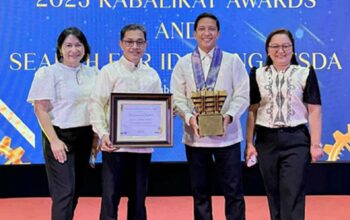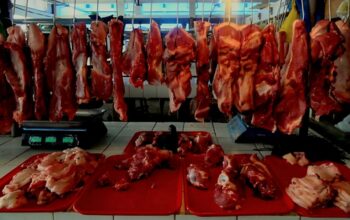AspiringGeoPark means for Candijay Candijay hopes to boost tourism activity and economic recovery after typhoon Odette and the Covid-19 pandemic with Bohol’s newly-launched #BoholAspiringGeoPark tourism campaign.
The new tourism campaign promotes Bohol’s bid for UNESCO accreditation through the UNESCO Global Geoparks (UGGp), which focuses on geohistorical conservation and sustainable tourism.
Through the Bohol Provincial Tourism Office (BPTO), The Provincial Government of Bohol (PGBh) sets out to promote a new feature in tourism that highlights Bohol’s distinctive geographical character through Geotourism. BPTO sponsored a familiarization tour with the media, influencers, photographers, and vloggers to promote a 2-day tour in the North-Eastern part of Bohol to promote its geological heritage sites from November 7 to November 8, 2022, including three sites from Candijay.
Municipal Tourism Officer Candijay Fred Janiola expressed his enthusiasm for Candijay’s inclusion in the BPTO’s promoted Geopark itinerary. Janiola shared that the COVID-19 pandemic and typhoon Odette took a devastating hit on the Municipality’s tourism activity and provided a significant economic loss for Candijay.
Nevertheless, Janiola shared his optimism during an interview with the Provincial Information and Media Office that UNESCO accreditation could turn things around for Candijay.
“It means more opportunities for people to earn a living. The people of Candijay work hard every day to provide for their families. More income from tourism means more income for our tour guides, our habal-habal drivers, our cleaners, etc.” Janiola said.
He added that it could give Candijaynons a sense of pride in their heritage, and the accreditation could help preserve the town’s geoheritage sites through conservation efforts.
“We want to show the world how amazing Candijay is, and the UNESCO accreditation for Bohol’s geopark is a great opportunity,” Janiola added.
The first part of the familiarization tour started in Candijay, a Municipality in the eastern part of the province that is 2 hr 11 min (97.7 km) away from Tagbilaran City via Bohol Circumferential Road.
The Municipality of Candijay has three known geoheritage sites that tourists can visit: Can-umantad Falls, Candijay Rice Terraces, and the Canawa Cold Springs. The group visited the Can-umantad Falls first, where tour guides briefed them on the site’s history and how it developed into a tourist spot today. The 60-ft waterfall got its name from the old Bisaya words “Kan-uman” (Sixty) and tad or dupa (Fathom) when the locals estimated the height of the falls to have reached at least 60 feet. Known as the”Tallest Waterfall” in Bohol, Can-umantad measures two-hundred sixty-one feet.
The waterfall has tuffaceous sediment believed to have developed during the middle Miocene Period (15 million to 11 million years ago), with the water source originating from Pundol Spring. Today, the water from the pundol spring falls into the right side of the landform due to typhoon Amy in 1951 and typhoon Ining in 1964, diverting its water system from the left side. Cottages are available near the Waterfalls, where visitors can have picnics while swimming. Above Can-umantad waterfalls is the 193-hectare Cadapdapan Rice Terraces, believed to have been created in the 1970s by the local farmers. Tourists can visit the area through a trail of aqueducts leading to the terraces. Guides in the area recommend visiting the terraces at 6 AM to experience the scenery during sunrise.
The last stop at the familiarization tour in Candijay was the Canawa Cold springs which got its name from the local term “Cawa” or pan due to its spheroidal shape. Tourists can rent cottages on the side of the springs for picnics while enjoying a swim in the cold springs.
Through the #BoholAspiringGeoPark, PGBh hopes for a successful campaign for a UNESCO accreditation that highlights the geoheritage sites found in the province. The promotion of Geoparks is not only to provide tourists with scenic views they can enjoy; but also an opportunity to immerse them in a scientific understanding of the geological history of Bohol. (PIMO/rvo/GC)



